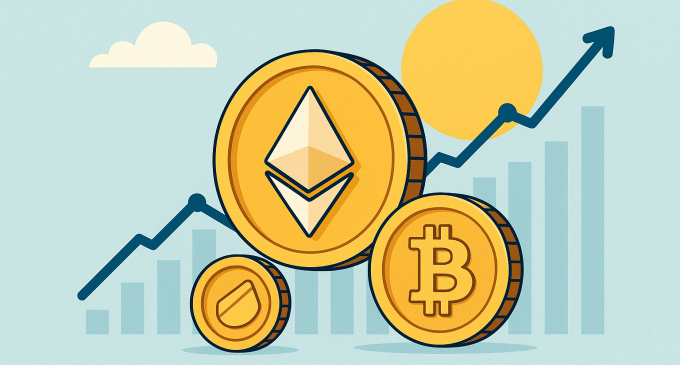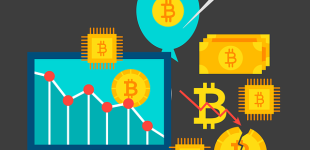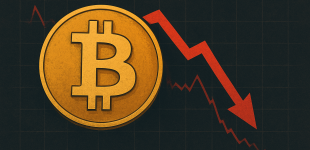
Introduction
As the cryptocurrency market enters the heart of summer 2025, investor attention is shifting. While Bitcoin has traditionally dominated the crypto narrative, recent signals suggest a rising tide for altcoins. Ethereum, Solana, and other major alternative cryptocurrencies are gaining significant institutional interest, and many market analysts are forecasting that they may outpace Bitcoin’s performance during the third quarter of the year. This development represents more than a temporary trend; it reflects a maturing market that is diversifying and evolving rapidly.
The Maturing Altcoin Landscape
Altcoins—cryptocurrencies that are not Bitcoin—have come a long way since the early days of blockchain development. Ethereum, as the second-largest cryptocurrency by market capitalization, has established itself as the foundation of decentralized applications and smart contract infrastructure. Its transition to Ethereum 2.0 has drastically reduced energy consumption and increased transaction throughput, boosting investor confidence and institutional adoption.
Solana, another major player, has continued to distinguish itself through its speed and low transaction costs. Innovations in scalability and its growing DeFi and NFT ecosystems are drawing both developers and investors to the platform. Cardano, Avalanche, and newer contenders like Aptos and Sui are also carving niches in a space that was once viewed as Bitcoin-centric.
The general perception of altcoins has matured. These assets are no longer seen merely as speculative alternatives to Bitcoin, but as technology platforms with real-world use cases, ranging from finance and gaming to identity verification and supply chain management.
Why Ethereum May Lead The Charge In Q3 2025?
Ethereum remains the most prominent altcoin and is poised to lead the broader altcoin surge. Several factors support this outlook.
Ethereum 2.0 and Staking Momentum
Since Ethereum completed its transition to Proof-of-Stake, the network has seen exponential growth in staking. Institutional investors, including major funds and publicly traded companies, are increasing their ETH holdings to participate in the staking economy. This long-term positioning reduces circulating supply, putting upward pressure on price.
Moreover, the expected launch of EIP-7600 later this summer could further optimize Ethereum’s fee structure, making it even more appealing for developers and users. Enhanced scalability and a friendlier user experience are likely to attract broader adoption.
DeFi and Web3 Expansion
Ethereum remains the epicenter of the decentralized finance (DeFi) ecosystem. From lending platforms to decentralized exchanges, the network’s infrastructure supports the lion’s share of DeFi activity. In 2025, the total value locked (TVL) in Ethereum-based DeFi protocols is seeing steady increases, with new institutional-grade products entering the market.
Additionally, the rise of Web3 applications is reinforcing Ethereum’s position. Projects focusing on decentralized social networks, media, and identity are increasingly being built on Ethereum’s base layer or using layer-2 solutions like Arbitrum and Optimism.
Solana And The Rise Of High-Speed Layer 1s
Solana is also attracting significant attention. After recovering from major network congestion issues in 2022 and 2023, the network has emerged with stronger infrastructure and better stability. In 2025, Solana’s ecosystem is flourishing with DeFi, NFT marketplaces, and gaming platforms growing at an accelerated pace.
Institutional support is a critical part of Solana’s momentum. Several crypto hedge funds and venture capital firms are allocating capital specifically to Solana-based projects. The introduction of tokenized real-world assets (RWAs) on Solana is also beginning to gain traction, with the platform positioning itself as a cost-effective alternative to Ethereum for high-volume transactions.
Solana’s faster block times and significantly lower fees offer a compelling narrative in a market where usability and scalability are now as important as decentralization.
Market Dynamics: What’s Driving The Altcoin Surge?
Multiple macroeconomic and market-specific factors are contributing to the surge in altcoin interest.
Bitcoin Plateau and Investor Diversification
Bitcoin has been relatively stable in recent weeks, hovering above the $70,000 mark. While this represents strong support, some investors are rotating out of Bitcoin to seek higher returns from altcoins. This is a common pattern during mid-cycle phases of bull markets when investors become more risk-tolerant.
Diversification strategies among institutional players are also becoming more sophisticated. Traditional funds entering the crypto market are no longer content with BTC-only exposure and are increasingly incorporating top-tier altcoins into their portfolios.
ETF Influence and Market Legitimacy
The approval of multiple Bitcoin and Ethereum ETFs earlier in 2025 has legitimized digital assets in the eyes of traditional investors. With more regulatory clarity in the U.S. and Europe, altcoins like Ethereum, Solana, and others are benefiting from broader capital inflows.
This ETF-driven legitimacy also means institutional investors are now exploring sector-specific plays. For example, funds focused on DeFi may heavily weight Ethereum and Avalanche, while NFT or gaming-related portfolios could favor Solana and Immutable X.
Improved On-Chain Metrics and Developer Activity
Altcoin networks are experiencing increased developer activity, which is typically a leading indicator of long-term growth. According to recent data from Electric Capital, Ethereum continues to lead in terms of monthly active developers, while Solana, Polkadot, and Arbitrum are seeing year-over-year growth.
Network activity metrics, including active addresses, daily transaction volumes, and fees generated, all show that these platforms are seeing greater user engagement. These fundamentals are crucial in distinguishing sustainable projects from speculative tokens.
Challenges And Risks: Not All Altcoins Will Win
Despite the optimism, not all altcoins are poised for success. The altcoin market remains fragmented, and many projects lack product-market fit, long-term vision, or robust security. Rug pulls and scams, though declining, still exist in less-regulated corners of the ecosystem.
Investors must also consider the impact of regulatory shifts. While Ethereum and Solana are generally viewed favorably by regulators, other altcoins may face scrutiny, especially those that blur the line between utility and security tokens.
Market volatility remains another key risk. Although altcoins have greater upside potential, they are also more susceptible to sharp corrections. Leveraged trading and low liquidity in some tokens can amplify losses quickly.
Sector-Based Performance: Where Altcoins Are Gaining Ground?
Different altcoins are gaining traction in specific market sectors:
Decentralized Finance (DeFi)
Ethereum: Continues to dominate with protocols like Aave, Uniswap, and MakerDAO.
Arbitrum and Optimism: Gaining popularity as scaling solutions offering faster and cheaper transactions for DeFi users.
Avalanche: Positioned as an institutional DeFi hub with ongoing partnerships with traditional finance firms.
Non-Fungible Tokens (NFTs) and Gaming
Solana: The NFT market on Solana is booming thanks to low fees and fast execution. Popular collections like Mad Lads and SMB continue to thrive.
Immutable X and Polygon: Focused on scalable solutions for blockchain gaming and NFT marketplaces.
Real-World Assets (RWA) and Tokenization
Chainlink: Providing the oracle infrastructure necessary for accurate RWA data feeds.
Polkadot and Cosmos: Facilitating cross-chain communication critical for RWA adoption.
Institutional Perspectives: Altcoins In Portfolio Strategy
Leading asset managers are increasingly incorporating altcoins into multi-strategy crypto funds. According to a recent report by Fidelity Digital Assets, altcoins now make up approximately 30 percent of their blended crypto portfolio products.
The rationale behind this shift includes:
Technological differentiation.
Faster innovation cycles.
Risk-adjusted return potential.
Additionally, family offices and high-net-worth individuals are looking beyond Bitcoin and Ethereum, allocating capital to projects with strong ecosystems, active development, and real-world utility.
Retail Sentiment And Community Engagement
Retail investors continue to play a vital role in altcoin growth. Communities built around projects like Cardano, XRP, and Solana are influential in driving adoption and visibility. Social platforms such as Reddit, Discord, and X (formerly Twitter) are constantly buzzing with project updates, tokenomics debates, and price speculation.
Tools like decentralized autonomous organizations (DAOs) are also encouraging community participation in governance, giving users a greater sense of ownership and alignment with project success.
Looking Ahead: What To Expect Through Summer 2025?
As Q3 begins, the outlook for altcoins appears strong, especially for Ethereum and Solana. Institutional capital is flowing into these assets with more sophistication, while retail excitement continues to support bullish momentum. Ethereum’s scalability upgrades and Solana’s ecosystem expansion are leading the charge.
Here are some expected trends:
Increased ETF exposure to Ethereum and possible future altcoin-focused ETFs.
Continued rise in staking and DeFi activity.
Growth in real-world asset tokenization projects.
Strengthened multi-chain interoperability through bridges and Layer-2 solutions.
Key Dates to Watch
July 2025: Expected U.S. SEC updates on crypto fund regulations.
August 2025: Launch of Ethereum’s next major upgrade.
Q3 2025: Reports from large financial institutions on crypto fund performance.
Conclusion
While Bitcoin remains the cornerstone of the cryptocurrency market, Ethereum and select altcoins are increasingly commanding attention—and capital. Driven by institutional adoption, technological improvements, and growing user ecosystems, altcoins are no longer playing second fiddle.
The summer of 2025 could mark a pivotal moment where the altcoin narrative becomes a dominant force in crypto market dynamics. However, success will depend on project fundamentals, market sentiment, and the ability to deliver scalable, real-world applications.
For investors and market watchers, the message is clear: the altcoin era is not only coming—it may already be here.







There are no comments at the moment, do you want to add one?
Write a comment